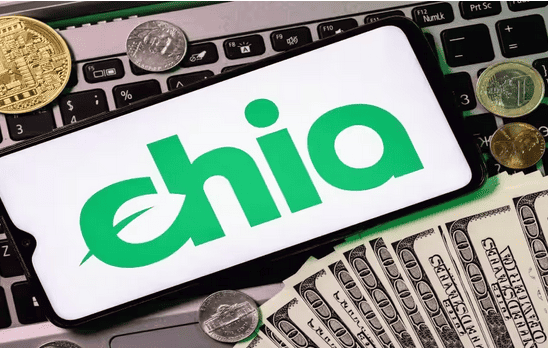Chia, a new cryptocurrency, may soon be accountable for a rise in hardware prices. However, the explanation may surprise you, as price increases on the Chia blockchain are controlled by the validation mechanism used to generate blocks.
This is the article for you if you want to understand more about the Chia cryptocurrency and why it is set to trigger an SSD shortage.
What Is the Chia Cryptocurrency?
Bram Cohen, the creator of the peer-to-peer BitTorrent technology, created Chia.
Many people have made comparisons between Chia and Ethereum, and Bitcoin. Like Ethereum and Bitcoin, the Chia network has its on-chain programming language called Chialisp.
Chialisp is comparable to Ethereum’s Solidity, allowing for intelligent transactions. In addition, Chialisp is designed to provide decentralized application technologies such as multi-signature wallets, colored coins, and recoverable wallets.
The Chia Network is intended to be as broad as possible to avoid the need for validators (miners) to purchase more expensive equipment, as with Bitcoin and Ethereum.
Chia employs a Proof of Space and Time (PoST) paradigm rather than a Proof of Work (PoW) methodology.
It mines using storage rather than processing performance. This offers various advantages, including lowering the electricity wasted during mining.
The Chia Network’s Proof of Space and Time (PoST) Algorithm
To validate transactions on the blockchain, Bitcoin‘s PoW mechanism relies on different validators, known as miners, solving challenging mathematical puzzles.
Bitcoin and many other blockchains use this form. However, the detrimental environmental impact of the consensus mechanism has recently been increasingly evident. The energy used is comparable to the amount required to run some countries.
The Proof of Stake (PoS) mechanism validates transactions by staking cryptocurrencies on a network. The amount of tokens stored on a grid on a PoS blockchain decides whether they are picked to mine or validate the next block.
While this method uses less energy than a PoW algorithm, it may be less efficient than the Proof-of-Space and Time model regarding energy savings.
Blockchain validators on the Chia Network enable the PoST mechanism. Unused computer storage space containing digit strings is placed onto the computers of validators. Acquiring more space and lines (e.g., purchasing more SSDs) increases the likelihood of winning a block on the network.
How Does Proof of Space and Proof of Time Work?
Proof of Space is a cryptographic approach that uses underutilized hard disk space for storage. To be utilized as a consensus method, Proof of Space must be linked to Proof of Time.
Participants in Proof of Space must demonstrate that they have unused storage space on their hard drives. Special software and a collection of cryptographic numbers organized into “plots” are installed on the machine.
Farmers in the Chia Network scan their plots (storage) to see if they have a hash to win the challenge.
Farmers must be able to give enough overall space to receive incentives for producing blocks on the network. The likelihood of winning a reward is determined by how much space you have compared to the network.
The Chia team is convinced that users would utilize their network to authenticate transactions without relying too heavily on single-use hardware or high electricity expenditures. Post is believed to assist in reducing cryptocurrency technology’s energy footprint without jeopardizing the censorship resistance and decentralization that make many blockchain-based solutions so beneficial.
The validation mechanism was designed in response to doubts about the strength of PoS and PoW security against nation-states and other threats.
The Chia project may make validating transactions easier and safer than other blockchains. The network’s consensus mechanism may also aid in the resolution of some centralization concerns encountered in PoW and PoS blockchains.
The manner of Chia cryptocurrency was launched in March 2021. This aligns with its plans to enable transactions on May 3, allowing users to trade the project’s tokens.
The closer we get to the date when transactions will be enabled, the more the demand for storage components will increase.
How Could a Proof Of Space and Time Consensus Algorithm Cause an SSD Shortage?
The growing popularity of cryptocurrencies like Bitcoin has contributed to a need for more graphics cards. This is because cryptocurrency miners purchase graphics cards in bulk to run their operations. This is similar to farmers on the Chia Network, who are already buying SSDs in droves.
Although trading has yet to begin (it is planned to start trading on May 3, 2021), Chia is generating a surge in demand for SSDs. In preparation, prospective validators in China are buying as many SSDs and hard disks as possible. However, according to the South China Morning Post, China is experiencing a shortage of SSDs and hard drives.
Other e-commerce markets report that complex drive models have sold out quickly since the Chia main net’s March 19, 2021 launch. A high amount of buyers are potential Chia Network farmers. Secondary market pricing for equipment is approximately 50% to 60% more than retail costs.
What is the reason for this surge in demand?
The Chia cryptocurrency was designed to be mined using SSDs and HDDs. However, early adopters are trying to seize as much Chia as possible before it becomes more difficult to drill or prices skyrocket.
Can the Chia Network Reduce the Environmental Cost of Cryptocurrencies?
Similar SSD shortages are affecting many regions worldwide, prompting an increase in bulk purchases. To fight this, stores are placing additional purchasing restrictions on SSDs and HDDs, as well as regulations, while manufacturers may strive to increase manufacturing when possible.
Hard drive and SSD purchases will undoubtedly increase enormously as more people anticipate the impending trading of Chia on May 3, 2021. However, despite attempts by some businesses to impose sales limits, it is still being determined whether this will alleviate the shortage.
With increased Chia trade, demand for SSDs may increase as more miners seek to benefit from the network.













